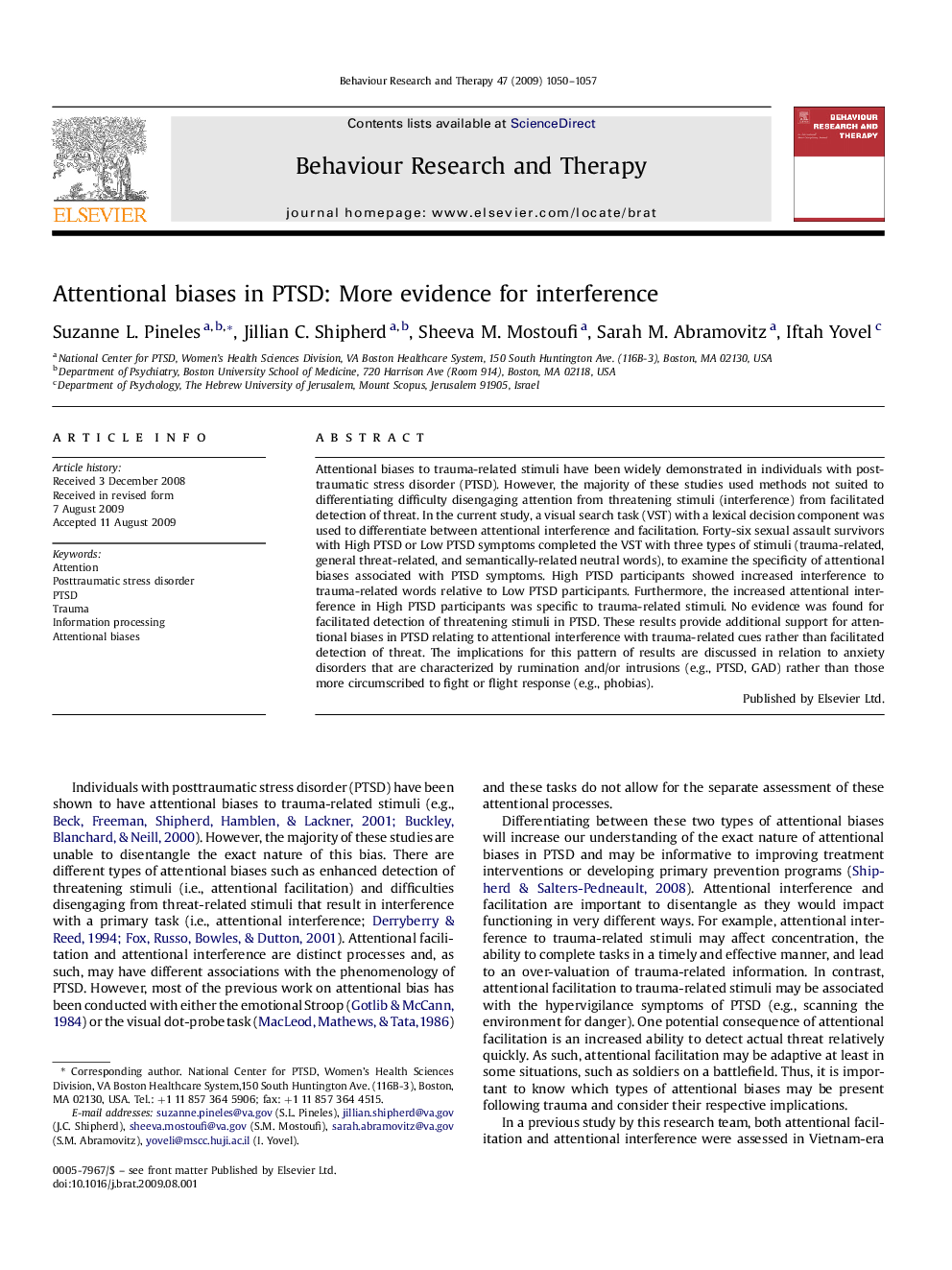| Article ID | Journal | Published Year | Pages | File Type |
|---|---|---|---|---|
| 902160 | Behaviour Research and Therapy | 2009 | 8 Pages |
Attentional biases to trauma-related stimuli have been widely demonstrated in individuals with posttraumatic stress disorder (PTSD). However, the majority of these studies used methods not suited to differentiating difficulty disengaging attention from threatening stimuli (interference) from facilitated detection of threat. In the current study, a visual search task (VST) with a lexical decision component was used to differentiate between attentional interference and facilitation. Forty-six sexual assault survivors with High PTSD or Low PTSD symptoms completed the VST with three types of stimuli (trauma-related, general threat-related, and semantically-related neutral words), to examine the specificity of attentional biases associated with PTSD symptoms. High PTSD participants showed increased interference to trauma-related words relative to Low PTSD participants. Furthermore, the increased attentional interference in High PTSD participants was specific to trauma-related stimuli. No evidence was found for facilitated detection of threatening stimuli in PTSD. These results provide additional support for attentional biases in PTSD relating to attentional interference with trauma-related cues rather than facilitated detection of threat. The implications for this pattern of results are discussed in relation to anxiety disorders that are characterized by rumination and/or intrusions (e.g., PTSD, GAD) rather than those more circumscribed to fight or flight response (e.g., phobias).
